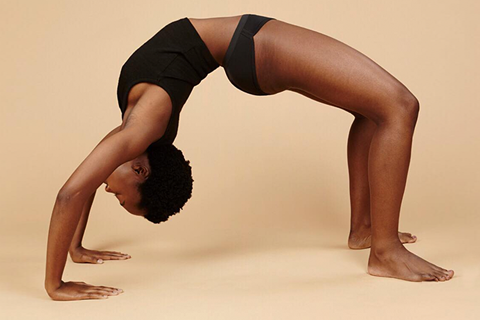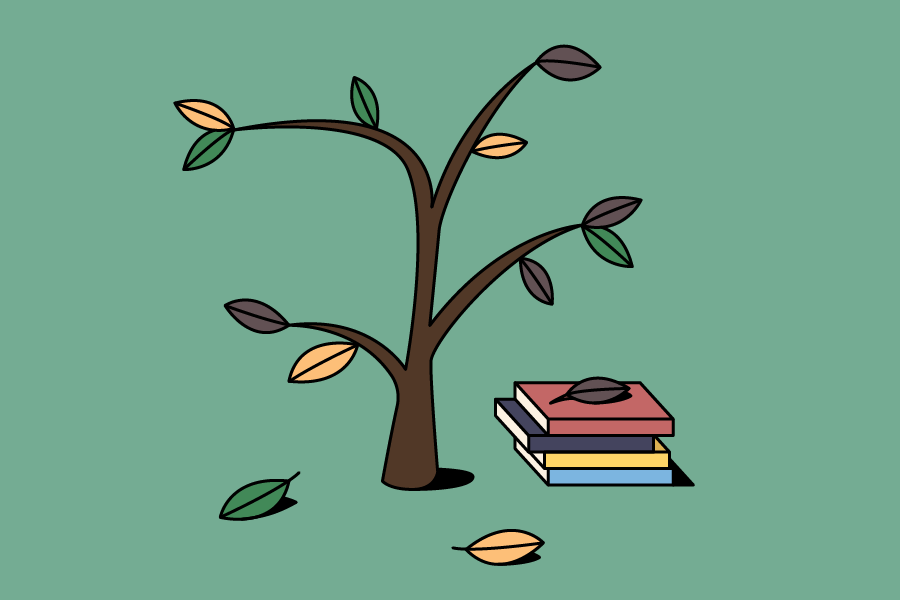Setting The Record Straight On Scoliosis
thinx archive
·5 min read

by Kelsey Duchesne | 10/12/2016
There are little things that I’ll always remember about wearing a back brace for two years. The complicated task that was picking up a dropped pencil during class, trying to find jeans that didn't have a button or zipper that would dig into my skin, and the torture of waking up on a sticky summer night, unable to take long, deep breaths. There were the good moments, too- I remember the satisfaction of piecing together an outfit that complimented the brace well, having perfect posture, and not feeling such a strain on my long spine. I remember a phrase tossed at me by the doctor that I’ve never been able to forget: “You’ll have hard days. Right now, it might come from a heavy backpack and down the road, it may be from a day in the garden.” A day in the garden? Tending to flowers may give me severe back pain? I still think about this garden when a day is especially terrible; when the pain is so severe I wrap myself up in a blanket cocoon and succumb to the sharp jabs. If this is rough, what will it be like when I’m 60? 70? What will a day in the garden be?
Almost always, my scoliosis sits in the back of my mind (and just, ya know, my back), but will occasionally enter my thoughts, like when I remember the garden example. Or when I think of being pregnant, and carrying what may end up being a very heavy baby (I’m talkin’ big. I was long, and 9 pounds. Yeesh.) I feel a sense of protectiveness and pride when I see a young girl wearing a brace over her clothing, making her way through a society that is obsessed with appearance while wrapped in hard plastic.
While 2%-3% of American’s have scoliosis by the age of 16, 1 boy is diagnosed for every 11 girls. The diagnoses often happens during adolescence, when your body is already dealing with changes that they’re not entirely ready for. When I see these girls, I try to remember the positive lessons they may learn from wearing their brace. I try to remember that this experience will make them stronger, and hopefully provide them a better sense of self. I hope that it will expand their creativity, as it did for me, and learning how to dress with the brace, not despite the brace, will become a welcomed challenge. I hope they know that they’re not alone, and despite the common film trope that a brace makes you nerdy (that scene from Romy and Michele's High School Reunion will forever haunt me) , you’re just you, making a sacrifice in order to care for your body. I hope they know that the garden is not worth fearing, even if I’m still learning this lesson myself.
So, scoliosis. Can you break it down for me?
Scoliosis is a lateral curvature in the spine. The curve often looks like an “S” or a “C” and can have an inward or outward curvature. A way to spot scoliosis, as it’s often done in school screening exams, is to bend forward and touch your toes. This method is often able to showcase your spine to find the curvature. The threat of scoliosis often ends once you’ve stopped growing, so you are most likely to be diagnosed during adolescence.
How do you get it?
There are 4 different types of scoliosis, and the reasons may vary.
Congenital: This type of scoliosis is often found at birth, and is caused by a bone abnormality.
Neuromuscular: This type of scoliosis is often found in people with cerebral palsy or spina bifida, and is a result of abnormal or nerves.
Degenerative: This type of scoliosis often occurs after a physically traumatic experience, like an accident, injury, surgery, or illness. Osteoporosis can also be a factor.
Idiopathic: This is the most common type of scoliosis. While there is no definitive cause, it is believed that it is genetic. No one cause has been proven.
Is it treatable?
Scoliosis is treated through a back brace or surgery. If you're curvature is under 40% and you are still growing, it is often recommended that you opt for a back brace. The purpose of the brace is to stop the expanding curvature in your spine as it continues to grow. The back brace does permanently straighten your back; while it does eliminate further curvature, it rarely can fix the curve that is already there.
If your curve is over 40%, you may want to opt for surgery. Scoliosis surgery involves metallic implants that aligns your spine and spinal fusion (i.e. joining the vertebrae together permanently). This surgery eliminates the chance that your spine curve may worsen, but often does not entirely straighten your spine.
What type of exercise is good for girls and women with scoliosis?
Women not only have a higher chance of having scoliosis when they’re young, but it’s more common to have osteoporosis (thinning of the bones) later in life, so it’s important to keep bones strong by participating in activities that increase bone density, like running, walking, or soccer. Activities favored by women with scoliosis often includes swimming, hiking, and yoga. Some yoga styles and practices are dedicated to back stretching and strengthening, too.
Is there a scoliosis support system for girls?
In 2006, Leah Stoltz founded Curvy Girls, a scoliosis support and resource website and community. At Curvy Girls, girls can find and communicate with Curvy Girl leaders from their communities, participate in events, and find educational resources. While this is a great resource for young girls looking for support and comradery, there are still a limited amount of applicable online resources for women looking for support and applicable information. There needs to be more visibility and support for the 6-9 million women and men who suffer from scoliosis. We have a long way to go, but we hope this article is a small step in the right direction.
Edit: Some wonderful readers gave us more excellent resources in the comments-- read below! :)
by Kelsey Duchesne


